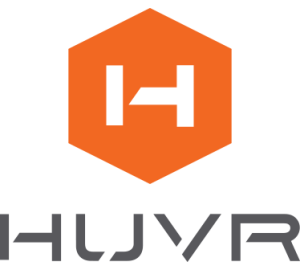Blog · 4 MIN READ
ExxonMobil and HUVR Take on the Challenges of Digitization
Posted on December 10
“Find, search and analyze,” was the summation Bob Baughman, CEO, HUVRdata gave of the problem of data aggregation when he interviewed Shankar Nadarajah, global drone visual inspection manager, equipment technology division, ExxonMobil. Their conversation was recorded as part of the Accelerate your Digital Strategy and the Action Plan to Make it Happen session of Operational Excellence in Oil and Gas 2020 last November and they had valuable advice no matter where you are on the path to digitization.
More formats, more problems
Leveraging digital inspection tools like drones and robotics to inspect plants is an important part of the digitization process. However, as desirable as this can be, it adds another layer of complexity to the process. Using cameras instead of relying on human eyes provides new possibilities: multiple kinds of information, in multiple formats–and it takes up a lot of virtual space. “[The data] is pretty large in size. We’ve got high-definition visual imagery, still imagery, videos,” said Nadarajah.
Simply transferring the files from the third-party service companies to ExxonMobil created logistical headaches, because they must be available for easy retrieval–the data does no good if it’s gathering virtual dust. The vessel for this transfer is often the humble PDF: good because it’s fairly universal, but if manipulation of the file after-the-fact is required, PDFs must be manually unlocked, adding another time-consuming task. Finding HUVR, a platform that could manage all this data effectively and automatically was a big part of ExxonMobil’s success.
Digitization is a Contact Sport
Variety may be the spice of life, but solving the issue of multiple file formats was just the first step in overcoming its challenges. “We have a lot of unique…sites we were supporting: upstream, downstream, chemicals, midstream; a lot of different environments: onshore, offshore,” said Nadarajah. Each of these sites comes with its own list of specific issues that needed to be addressed. Overcoming this challenge ended up being a matter of simple legwork–meeting with the sites to understand their issues was key, or as Nadarajah put it, “the process is a contact sport.” Cookie-cutter solutions decreed from on-high and forced down the line would not work. HUVR’s flexible platform allowed ExxonMobil to tailor the workflow to meet the specific needs of each site.
Beyond the physical limitations of each site, Nadarajah faced on-site levels of training that ran from digital native to downright archaic systems that needed modernization and support to streamline the process to an intuitive level of functionality. As Baughman put it, “Agility. Scalability.” Meeting these needs set the sites up for success.
Digital Work in the Pandemic Era
Digitization is not happening in a vacuum, as proven by the sites’ specific challenges, and the coronavirus affected the implementation in recent months by increasing the focus on digital services. Nadarajah said “[Our goal became to] keep reliable and safe operations at our plants while managing the situation with our personnel.”
Effective use of non-human inspection services definitely helped mitigate the risk to personnel, but cybersecurity was top-of-mind at all times, as digitization both enabled teams to work remotely but increased the risk of a breach. The pandemic-inspired increased use of digital information also brought the previously-referenced problem of aggregation into stark relief: When people are spending more time seeking data than analyzing it, a cohesive system is required.
A Peek at the Future and Advice for the Present
Baughman asked Nadarajah for a view of the future: is the answer totally robotic, humanless plants? The answer was, of course, no. The true goals of digitization are efficiency and safety. The less human intervention required in inspection, the better. Nadarajah asked “How do we take on the visual data and automate the analysis?” Automating analysis also frees humans up to manage work that a machine could not handle. Essentially, machines should be doing the often-dangerous grunt work and humans the high-level tasks.
After answering a number of audience questions, the session wrapped up, and Baughman pointed out that ExxonMobil has had great success in implementing digitization in general–and remote inspection in specific–and he pointed out that “to have a dedicated lead is one of the instruments that will determine success.” One person with the high-level view of the entire digitization effort leads to a cohesive strategy.
Nadarajah, who is that person at ExxonMobil, expanded on this, saying that digitization is a full-time job, and requires commitment and focus. Being pulled away by other responsibilities hinders the process. He also cited buy-in from management as critical, and having executives who understand the value that digitization can add to an operation and a company allows for the project lead to go out and help realize that value.


